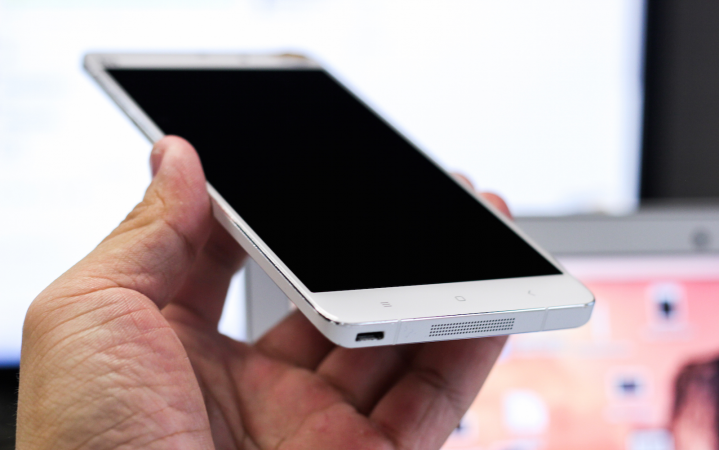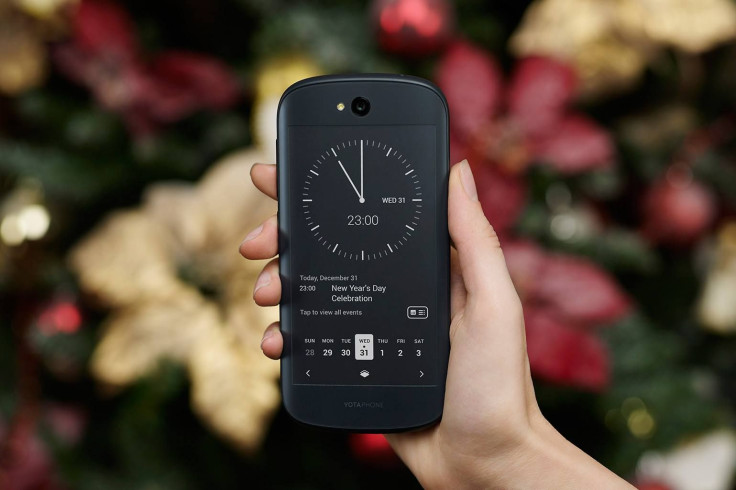Meet The 5 Most Amazing Smartphones You Can't Buy In The US

The U.S. smartphone market has been fought and won by Apple Inc. and Samsung Electronics C0., who preside over a relatively stable iOS-Android duopoly. But that's not the case abroad, where fast-growing markets have dozens of scaled players, and even alternative operating systems, vying for dominance. The U.S. was long ago surpassed by China as the largest smartphone market, and India is emerging as the most interesting, with a half-dozen platforms -- including several home-grown -- battling for supremacy.
Some of the fastest-growing smartphone makers -- Huawei, Xiaomi, Micromax and Karbonn -- don't even bother with the U.S., let alone Europe. As their phones get better (at a fraction of the cost), it's the U.S. market that is missing some of the most interesting smartphones on the global market. Here's a rundown of the best smartphones you can't buy (or at least easily buy) in the U.S.:
Xiaomi Mi Note/Mi Note Pro
What's cool: High-end specs for hundreds less than an iPhone.

Xiaomi’s latest smartphones are the most envied right now. The manufacturer’s first high-end phablets, announced last week, feature some of the most advanced specifications currently available.
The Mi Note Pro, in particular, features a 5.7-inch Quad HD display, the Qualcomm Snapdragon 810 chip and 4G of RAM memory. The Mi Note is slightly less powerful, with a Full HD display and 3G of RAM memory. The smartphones use Xiaomi’s latest MIUI 6 interface, which makes the Android 5.0 Lollipop software look somewhat like Apple’s iOS.
While they're Xiaomi's most expensive phones, they're still much cheaper than top U.S. smartphones. The Mi Note Pro will sell for 3,299 yuan/$532 and the Mi Note will sell for 2,299 yuan/$371.
Xiaomi has said expansion in Europe and U.S. is the plan, at some point, but the Mi Note and Mi Note Pro won’t be seen in these markets in 2015. The phablets will launch in China on Jan. 27.
YotaPhone 2
What's cool: Two screens!

The YotaPhone 2 is Russian manufacturer Yota’s latest iteration of an extremely interesting smartphone. The YotaPhone brand of smartphones include not just one screen but two, a main front screen, and a second “E-link” screen on its back. The E-link screen has a matte texture for easy viewing; the screen perfectly doubles as an e-reader. Users can also display notifications or social media applications on the back screen, in addition to using the screen to display images on the back screen as a personal design touch.
The YotaPhone 2 also includes much more advanced hardware specifications than its predecessor, which got little market attention when it released in 2012. The device includes a Qualcomm Snapdragon 800 chip, 2GB of RAM memory and 32GB of internal storage.
The YotaPhone 2 is currently available in European and Asian markets and can be purchased online. This phone is coming to the U.S. later this year, but it will cost a hefty $850. The YotaPhone 2 can also be found via various sellers on e-commerce Website Alibaba, selling for as much as $1450.
Lenovo P90
What's cool: Huge battery and quick-charge feature.

Lenovo’s new P90 smartphone may look like your everyday smartphone on the outside, but it’s what’s on the inside that counts with this device. In the Lenovo P90 is a massive 4,000-mAh battery, which offers up to 48 hours of battery life, and a quick-charge feature that can add 50 percent charge to a low battery in just 30 minutes. The smartphone also includes the first 64-bit smartphone chip by Intel. Other hardware specifications include a 5.5-inch full HD display, 2GB RAM and 32GB internal storage.
Lenovo’s Vibe Xtension Selfie Flash feature is also compatible with the P90. The accessory plugs into the 3.5mm audio jack and provides the perfect illumination for selfie shots. The Vibe Xtension Selfie Flash will be available in April, selling for $29.
Lenovo has not detailed which markets will have the P90 when it launches in February for $499, but the manufacturer has confirmed that the smartphone won’t be available in the U.S.
Huawei Ascend Mate 7
What's cool: Fingerprint sensor, great look.

Huawei admits that struggling with brand recognition is the main reason for avoiding the U.S. While the phone is not available from carriers, consumers can purchase the SIM unlocked version of the Ascend Mate 7 phablet on Amazon.com for $900, which runs on GSM networks like AT&T and T-Mobile US Inc.
The Ascend Mate 7 has a huge 6-inch display, a 4100mAh battery, and a fingerprint scanner that's considered one of the best on the market with technology similar to the Touch ID fingerprint sensor on Apple’s smartphones.
The device includes the Hisilicon Kirin 925 chip, a Full HD display, 2GB of RAM memory and 16GB of internal storage. It is readily available in markets such as the United Kingdom, Germany, Italy, France, Spain, China and Hong Kong.
Micromax YU Yureka
What's cool: Cyanogen OS.
This is it guys, YUREKA is here - make sure to register tomorrow onwards at http://t.co/L7oKT3AnCd #YUPlayGod pic.twitter.com/ul7gVCccFT
- YU (@YUplaygod) December 18, 2014The new Yu smartphone by the Indian mobile network Micromax is specifically targeted to India and priced under $200. The YU Yureka will sell for just 8,999 rupees/$146 when it goes on sale Thursday.
The YU Yureka features an operating system that most phones won’t have out of the box, Cyaongen OS 11, developed by Seattle-based Cyanogen Inc., the company behind the custom Android-based software CyanogenMod.
The only other smartphone that runs the official Cyanogen OS is the OnePlus One, which is available in the U.S. The YU Yureka is offered exclusively by Micromax in India. The device includes a 5.5-inch HD display, a Qualcomm Snapdragon 615 64-bit chip, 2GB of RAM memory and 16GB of internal storage -- quite impressive for a device that costs just $146. By providing a cheaper alternative in its domestic market, Micromax poses competition for manufacturers like Xiaomi.
© Copyright IBTimes 2025. All rights reserved.




















